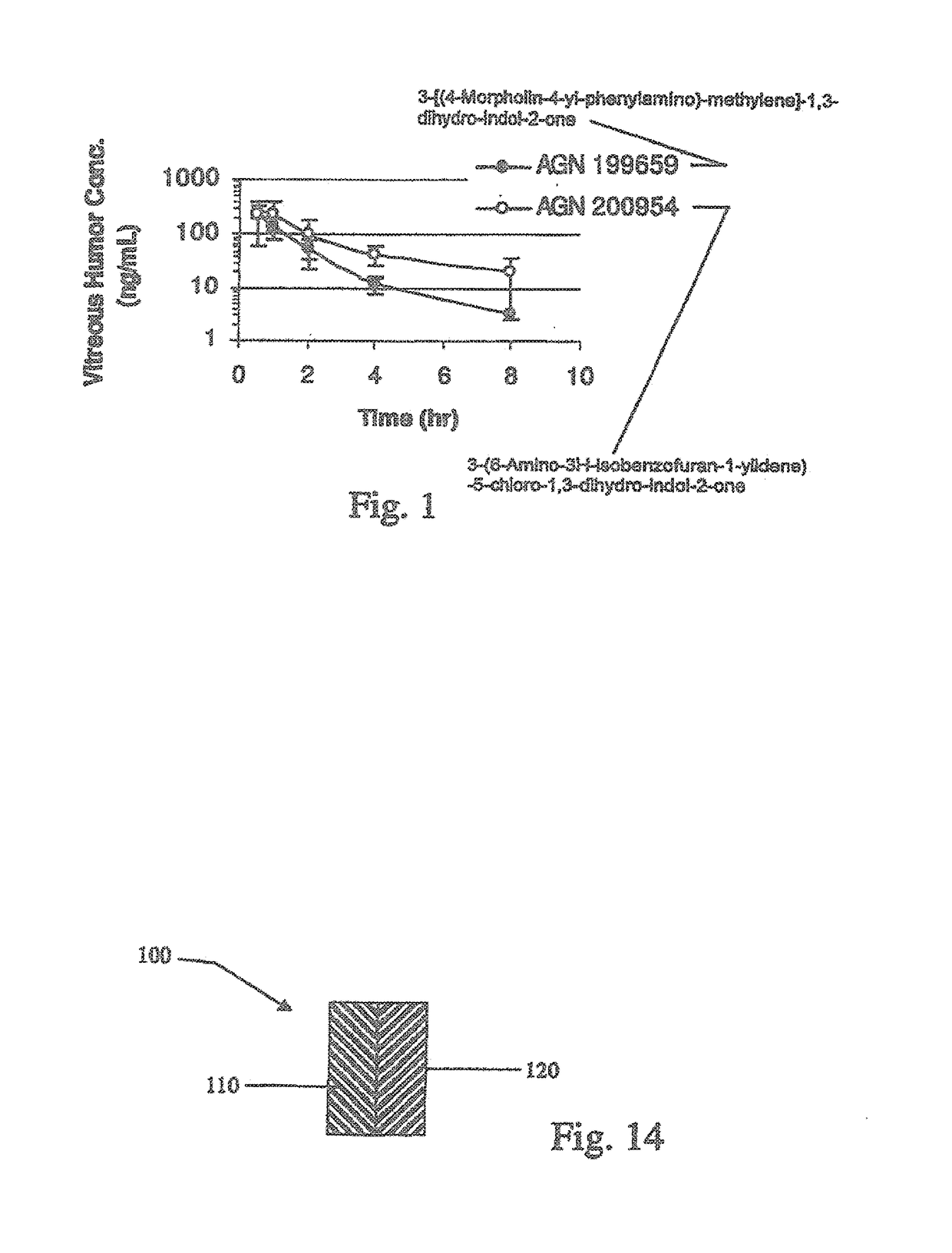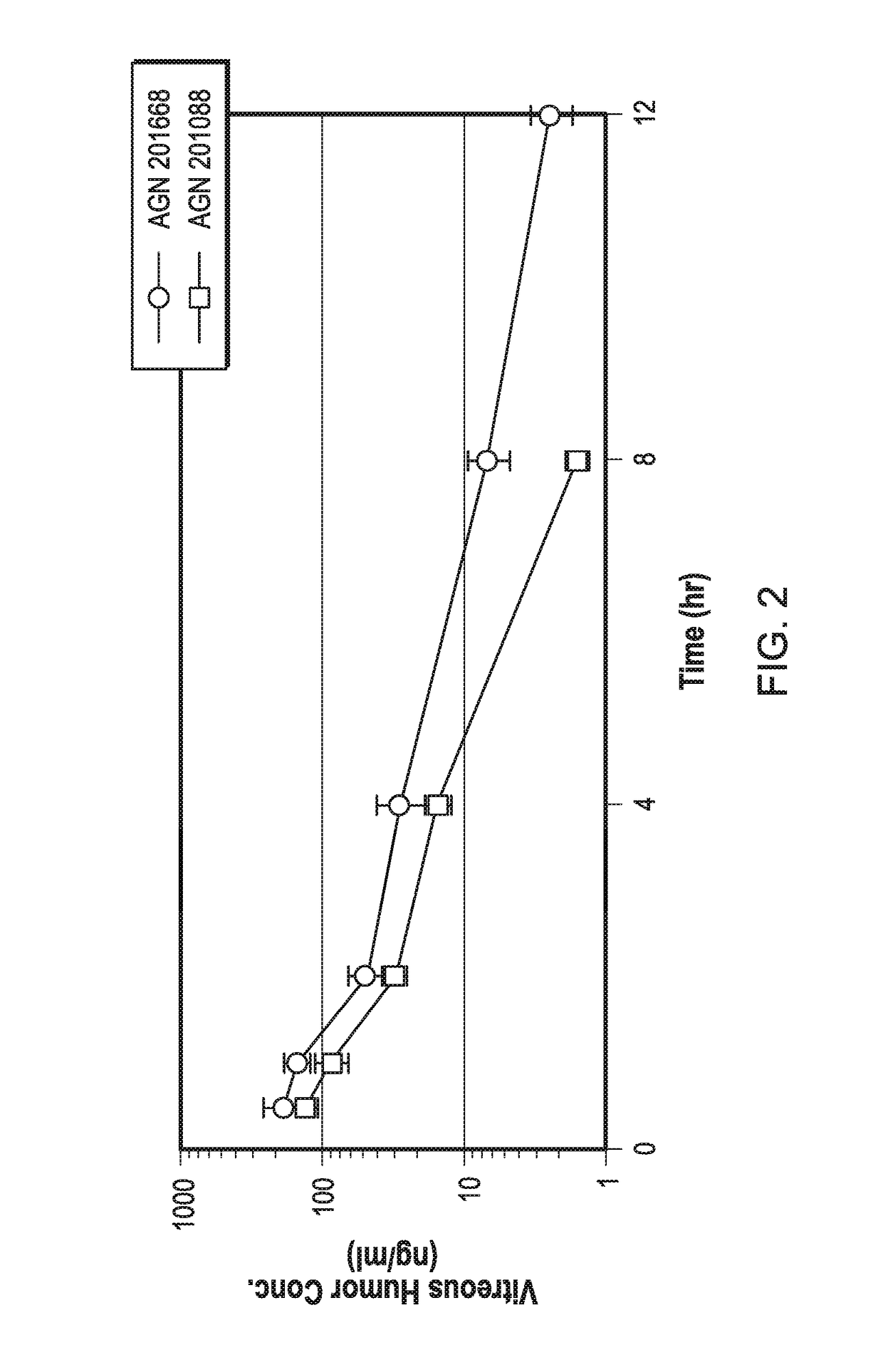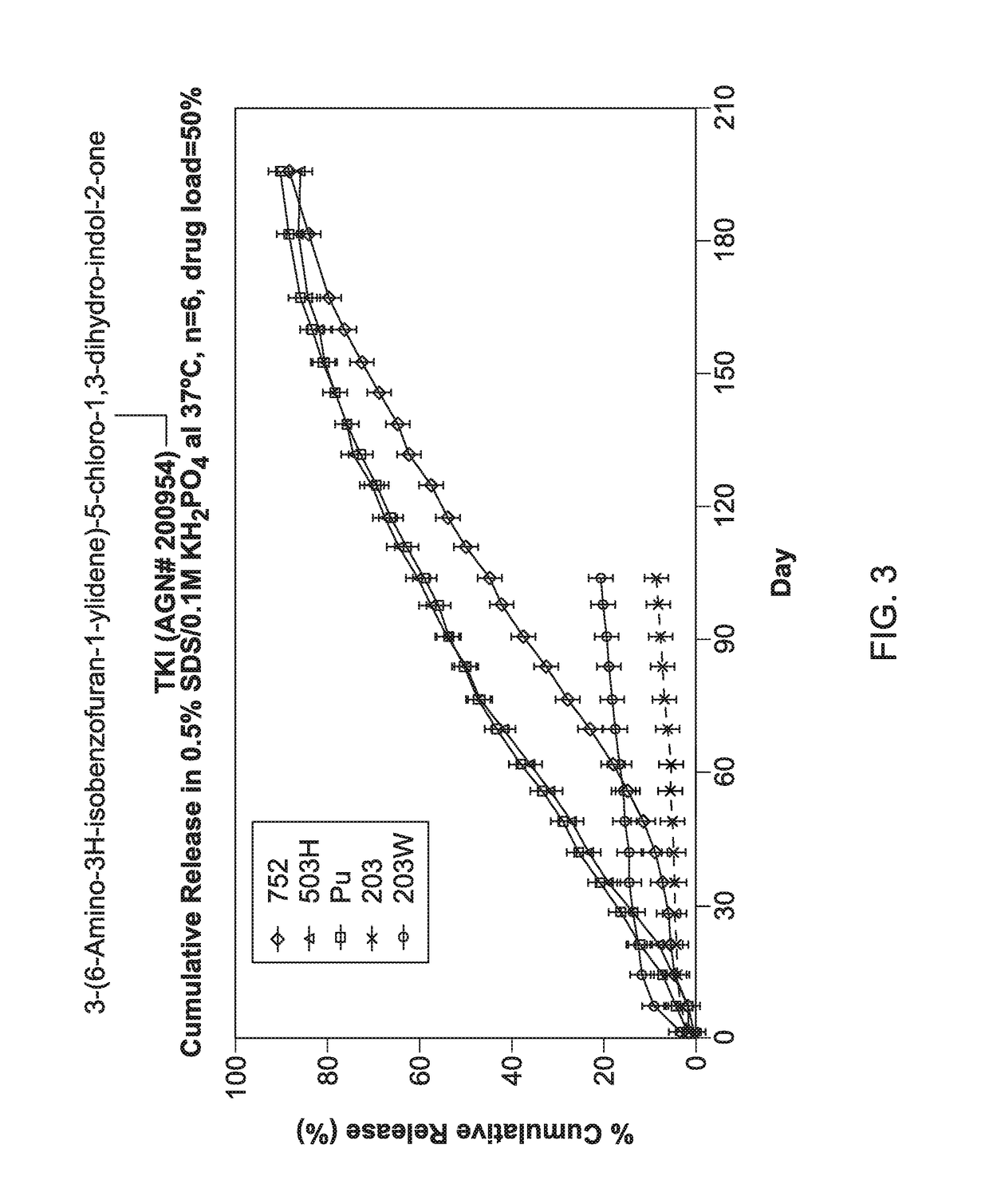Biodegradable intravitreal tyrosine kinase implants
a biodegradable, intravitreal technology, applied in the field of eye treatment, can solve the problems of severe restriction of systemic drug penetration into the retina, physical damage to the lens, retinal detachment, etc., and achieve the effect of few or no negative side effects
- Summary
- Abstract
- Description
- Claims
- Application Information
AI Technical Summary
Benefits of technology
Problems solved by technology
Method used
Image
Examples
example 2
TKI Biodegradable Implants
[0151]Tyrosine kinase inhibitors were incorporated into PLGA or PLA implants by extrusion. The TKIs were milled with the polymers at certain ratios then extruded into filaments. These filaments were subsequently cut into implants weighing approximately 1 mg. Several TKIs were formulated in the PLGA and PLA implants based on their potencies and physicochemical properties as shown in Table 2.
TABLE 2Tyrosine Kinase Inhibitors Formulated in PLGA ImplantsProjectedSolubilityAGNCss(ug / mL)NumberStructureEfficacypH 7log PpKaAGN 200954 4 ng / mL0.32.214.24 10.03 AGN 20231496 ng / mL2023.809.68AGN 202560105 ng / mL 413.669.65AGN 20163428 ng / mL881.254.06 10.25
[0152]TKI release from the implants was assessed in vitro. Implants were placed into vials containing release medium and shaken at 37° C. At the appropriate time points a sample was taken from the release medium for analysis and the medium totally replaced to maintain sink conditions. Drug in the sample was assayed by ...
example 3
In Vivo Pharmacokinetic Properties of TKI-Containing Implants
[0154]Implants containing AGN 202314 were placed intravitreally or subconjunctivally in an eye. The implants released AGN 202314 in-vitro over a 14 day period (FIG. 3.). The intent of this study was to achieve an intravitreal in-vivo / in-vitro correlation with the intravitreal implants and assess the feasibility of periocular delivery.
[0155]Intravitreal Implants, PLGA (400 μg AGN 202314 dose, 1 mg total implant weight), were implanted by surgical incision into the mid vitreous of albino rabbits. At days 8, 15, 31 and 61 rabbits were sacrificed and the vitreous humor, lens, aqueous humor and plasma assayed for AGN 202314.
[0156]Subconjunctival implants, PLGA (1200 μg AGN 202314 dose; three implants) and PLA microspheres (300 μg AGN 202314) were implanted subconjunctivally. At days 8, 15, 31 and 61 rabbits were sacrificed and the vitreous humor, lens, aqueous humor and plasma assayed for AGN 202314.
[0157]The data are summarize...
example 4
[0163]In vitro release of a TKI (AGN 201634) from an implant TKI release was examined for implants made from poly (D,L-lactide-co-glycolide) (PDLG) or poly (D, L-lactide) (PDL) in different media with or without addition of detergent at 37° C. in a shaking water bath.
[0164]AGN 201634 was obtained from Allergan, and its chemical structure is shown below. It was used as received without further purification. PDLG / PDL polymer materials were obtained from Purac America Inc.
[0165]TKI release was examined in various medium, including saline, phosphate buffer saline of pH 7.4, 50 mM bicarbonate buffer of pH 6.0±0.1 with 0.1% cetyltrimethylammonium bromide (CTAB), and 50 mM borate buffer of pH 8.5±0.1 with 0.5% sodium dodecyl sulfate (SDS) in a shaking water bath (Precision) at 37° C. Sample was incubated in 10 mL of medium, and was totally replaced with fresh medium at each sampling time. Drug concentration was determined by HPLC using a Waters 2690 Separation Module equipped with a Waters...
PUM
| Property | Measurement | Unit |
|---|---|---|
| time | aaaaa | aaaaa |
| time | aaaaa | aaaaa |
| time | aaaaa | aaaaa |
Abstract
Description
Claims
Application Information
 Login to View More
Login to View More - R&D
- Intellectual Property
- Life Sciences
- Materials
- Tech Scout
- Unparalleled Data Quality
- Higher Quality Content
- 60% Fewer Hallucinations
Browse by: Latest US Patents, China's latest patents, Technical Efficacy Thesaurus, Application Domain, Technology Topic, Popular Technical Reports.
© 2025 PatSnap. All rights reserved.Legal|Privacy policy|Modern Slavery Act Transparency Statement|Sitemap|About US| Contact US: help@patsnap.com



